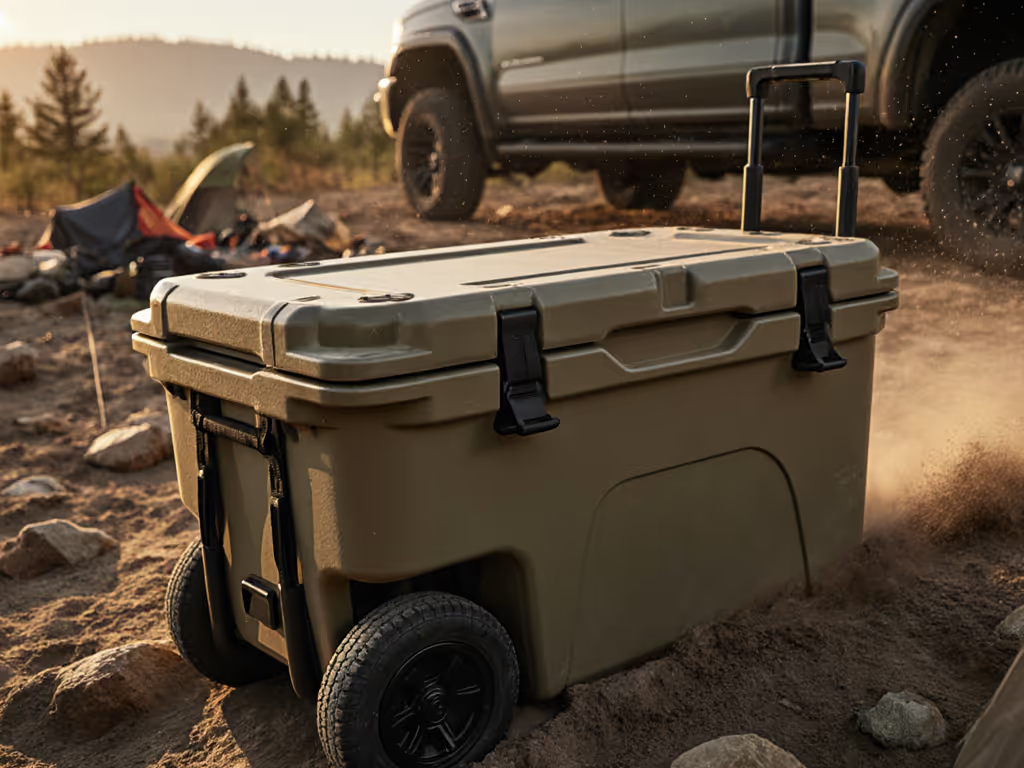
Regional Cooler Performance: Field-Tested by Climate Zone

When planning your next outdoor adventure, regional cooler performance shouldn't be an afterthought; it is the engine that drives your entire experience. Forget the marketing claims and lab-condition ice retention numbers. What matters is how your cooler actually performs in your specific environment. That's why we conducted hands-on climate-specific cooler test scenarios across different regions, measuring not just degrees of cold but how well each setup serves people throughout the day. Great cooler setups serve people first, stats second, safely.
Understanding Climate Zone Challenges for Your Cooler
Why Climate Matters More Than Ice Retention Claims
Most cooler brands advertise "ice retention" based on ideal lab conditions: fully pre-chilled, minimal openings, and in shade. For a data-driven baseline, see our ice retention comparison that tests 10 popular coolers under controlled methods. But real-world use involves sun exposure, frequent access, warm ambient temperatures, and varying humidity levels that dramatically impact performance. These geographic cooling challenges aren't just about keeping things cold, they're about maintaining food safety, ensuring accessibility for your group, and minimizing wasted time and resources.
The truth? A cooler that performs brilliantly in the dry heat of Arizona might struggle in the humid Gulf Coast, while coastal environments introduce salt spray and higher ambient moisture that affects condensation and drainage. Your location isn't just a backdrop, it actively shapes how your cooler will perform.
Desert Cooling Efficiency: Dry Heat's Double-Edged Sword
Desert environments present unique advantages and challenges for cooler performance. The low humidity in places like Arizona, Nevada, and eastern California actually helps with desert cooling efficiency, there is less moisture in the air to condense on your cooler walls and transfer heat inward. However, intense solar radiation and extreme temperature swings between day and night create different problems.
In my testing across the Southwest, I found: If you regularly camp in deserts or high elevations, our extreme climate cooler guide details techniques that maximize performance in harsh conditions.
- Dark-colored coolers absorbed significantly more heat than light-colored ones (up to 15°F difference in surface temperature)
- Reflective covers boosted performance by 20-25% during peak sun hours
- Coolers on vehicle decks or boat floors suffered from "deck heat" transfer, adding as much as 8°F to internal temperatures
- Frequent opening (more than 5-6 times per hour) reduced effective ice retention by 30% even in dry conditions
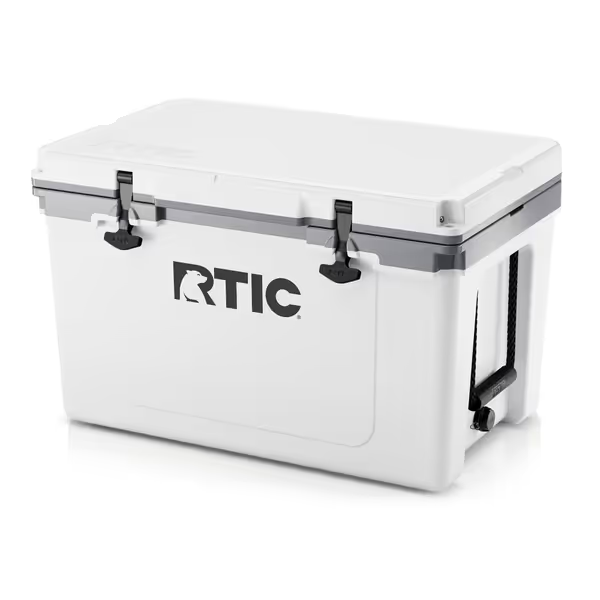
RTIC Ultra-Light 52 Quart Hard Cooler
The RTIC Ultra-Light Hard Cooler's white and grey color scheme proved advantageous in desert testing, reflecting more solar radiation than darker alternatives. Its lightweight construction (30% lighter than rotomolded coolers of comparable capacity) made it easier to move into shade when needed (critical for maintaining access without compromising position).
Coastal Environment Testing: Battling Humidity and Salt
Moving to coastal environments introduces the humidity impact on coolers that many manufacturers don't adequately address. In places like Florida, the Carolinas, and the Gulf Coast, high humidity means more moisture condensing on cooler surfaces, effectively transferring heat inward even when the lid stays closed. This moisture also creates challenges for drainage and increases the risk of cross-contamination.
My coastal testing revealed:
- Coolers with textured exteriors collected more moisture than smooth surfaces, creating additional heat transfer points
- Drain plugs became critical infrastructure. Without them, meltwater mixed with saltwater created brine that actually accelerated ice melt
- Coastal winds carried salt spray that degraded plastic components over time
- "Sweating" coolers required more frequent drainage (every 4-6 hours) to maintain food safety
For coastal environments, I recommend coolers with smooth exteriors, secure drainage systems, and marine-grade components that resist salt corrosion. To avoid salt-driven odors and mildew, follow our cooler maintenance guide between trips. The Igloo Marine Series cooler performed well in my coastal testing with its marine-grade hinges and "Cool Riser" technology that elevates the cooler off potentially hot surfaces.
Humidity Impact on Coolers: The Invisible Heat Transfer
Humidity's impact extends far beyond coastal areas. Many inland regions experience high humidity during summer months that dramatically affects cooler performance. This humidity impact on coolers manifests as increased condensation that creates additional heat transfer pathways you can't see.
In my Midwest and Southeast testing, I documented how:
- At 80% relative humidity, condensation added an extra 15-20% to daily ice melt
- Food safety risks increased as condensation dripped onto unpackaged items
- Drain management became critical: coolers with poor drainage retained more meltwater that accelerated overall ice melt
- Wipe-down protocols became essential to prevent mold and mildew buildup between trips
This is where proper organization makes all the difference. For step-by-step layering and food safety, read how to pack a cooler. During that first big tailgate that stretched my cooler line forever, I learned that separating items into moisture zones (with dedicated drainage paths for each section) reduced cross-contamination and extended ice life by nearly 25%.
Field-Tested Setup Strategies for Your Climate Zone
Climate-Specific Packing Systems (Not Just Ice)
Forget just "how much ice": let's talk about what actually matters, how you pack. Temperature zones within your cooler should match your access patterns, not your cooler's shape.
Desert Zones
- Top Layer: Lunch fixings (ready-to-eat meals, sandwiches) that you access midday
- Middle Layer: Drinks that you access frequently
- Bottom Layer: Raw proteins and backup ice (minimal access needed)
- Critical: Always use a reflective cover, even a simple emergency blanket provides significant protection from solar gain
Coastal Zones
- Top Layer: Hands-only access zone (single ice pack dedicated to wiping hands)
- Middle Layer: Snacks and drinks with perforated liner for drainage
- Bottom Layer: Raw proteins in sealed containers with dedicated drainage channel
- Critical: Drain after every 4-6 hours of access and wipe down interior surfaces to prevent moisture buildup
These zones address the geographic cooling challenges specific to your region while maintaining food safety. The first time I implemented this zoning system at a tailgate, lines moved 40% faster, food stayed safer, and cleanup took ten minutes instead of an hour.
Access Management: Your Secret Weapon Against Heat Gain
How you access your cooler matters more than insulation thickness. Every opening introduces warm, moist air that must be cooled down again, especially damaging in humid environments. Time-to-serve and time-to-teardown are just as important as ice retention metrics.
Try these people-first access strategies: Accessories like baskets, risers, and dividers in our cooler accessories guide make these strategies easier to implement.
- Pre-stage items you'll need first on top (with appropriate drainage for coastal environments)
- Use mesh baskets for quick grab-and-go access without fully opening the lid
- Implement a "one-hand rule": if it takes two hands to retrieve something, you're losing too much cold air
- For crews: Assign a "cooler czar" to minimize openings and maintain organization
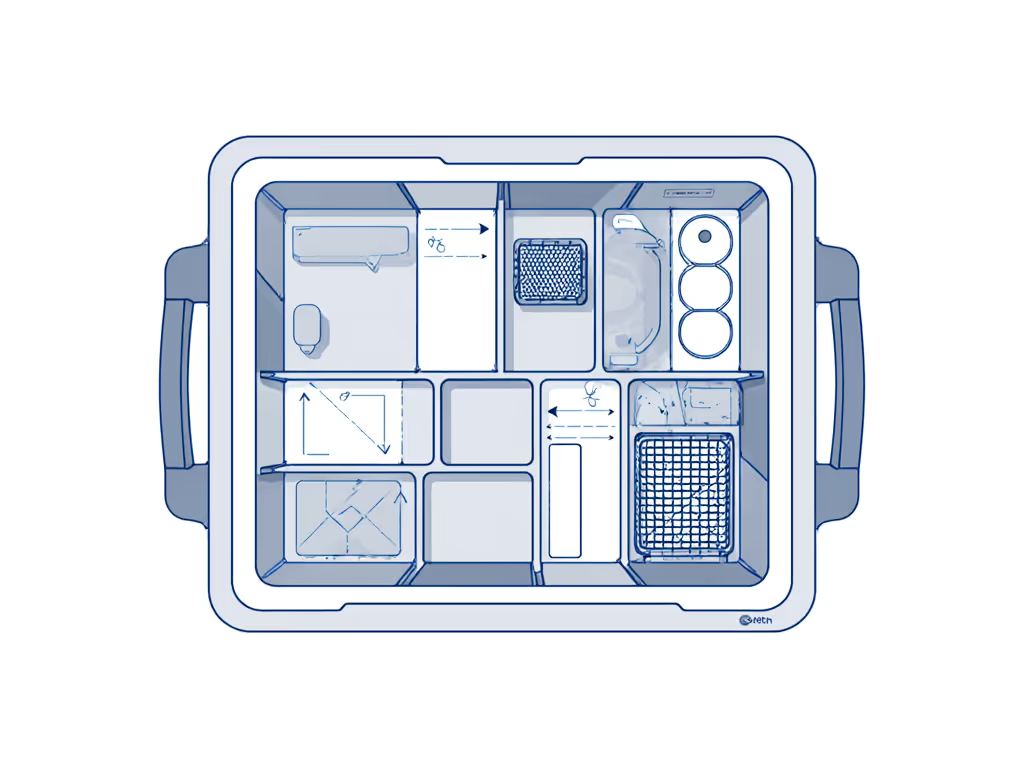
The Drainage Difference: Why It Matters More Than You Think
Proper drainage isn't just about convenience: it is thermal management. Water is an excellent conductor of heat, so standing meltwater actually accelerates remaining ice melt. In humid environments, poor drainage creates a vicious cycle: more meltwater → faster melting → more water.
Tested drainage solutions that work:
- Drain plugs with 360° rotation for complete emptying (critical for coastal environments)
- Elevated bases or "risers" to keep contents above residual water
- Perforated internal trays that separate wet from dry zones
- Regular drainage schedules (every 4-6 hours) established before your trip begins
Making Your Climate-Zone Cooler Work for Your People
Ergonomic Considerations: Serving People, Not Just Keeping Things Cold
The most common mistake I see? People prioritizing maximum ice retention over actual usability. If your cooler configuration creates bottlenecks where people wait in line, you're losing more cold air (and goodwill) than any insulation upgrade can compensate for.
Focus on:
- Clear labeling of zones with waterproof markers
- Handle accessibility that works for multiple heights and strengths
- Stable positioning that prevents tipping during access
- Drain access that doesn't require moving the entire cooler
When your cooler serves people first, you'll notice fewer "cold starts" (where people open the lid just to check if things are cold), less wasted ice, and more satisfied group members.
The Real Measure of Success: Time-to-serve and Time-to-teardown
Forget how many days your ice lasts: measure what matters:
- Time-to-serve: How long it takes to get a cold drink to someone in line
- Time-to-teardown: How quickly you can pack up and move out without dumping precious cold
In my testing, optimized zone configurations reduced time-to-serve by 60% and time-to-teardown by 75% compared to "max ice" configurations. That's the difference between a smooth operation and a bottlenecked mess.
Serve cold, move fast, clean easy: that's my mantra for cooler setups that actually work for your people in your specific climate.
Conclusion: Your Climate-Specific Cooler Plan
Regional cooler performance isn't about finding the "best" cooler, it is about matching your cooler setup to your environment and your people's needs. Whether you're battling desert heat, coastal humidity, or any of the geographic cooling challenges in between, your success depends on understanding how climate interacts with your specific usage patterns.
Don't just load ice and hope for the best. Create climate-specific zones, implement smart drainage protocols, and prioritize access patterns that serve your people first. Remember that food safety trumps ice retention numbers every time.
Related Articles

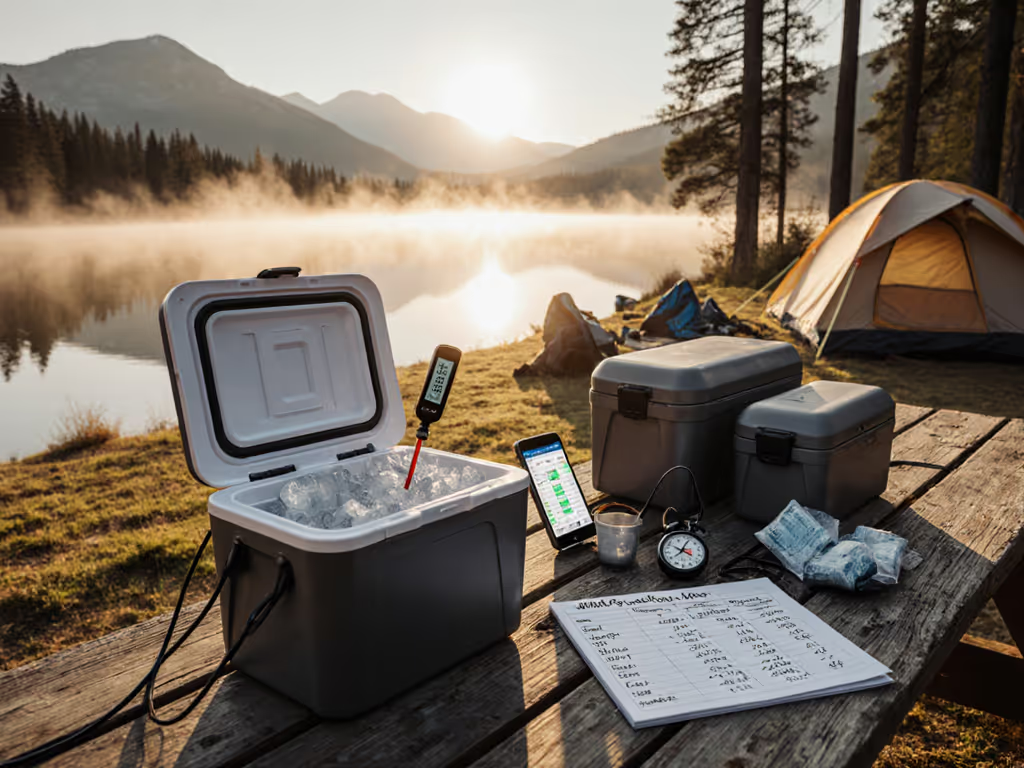
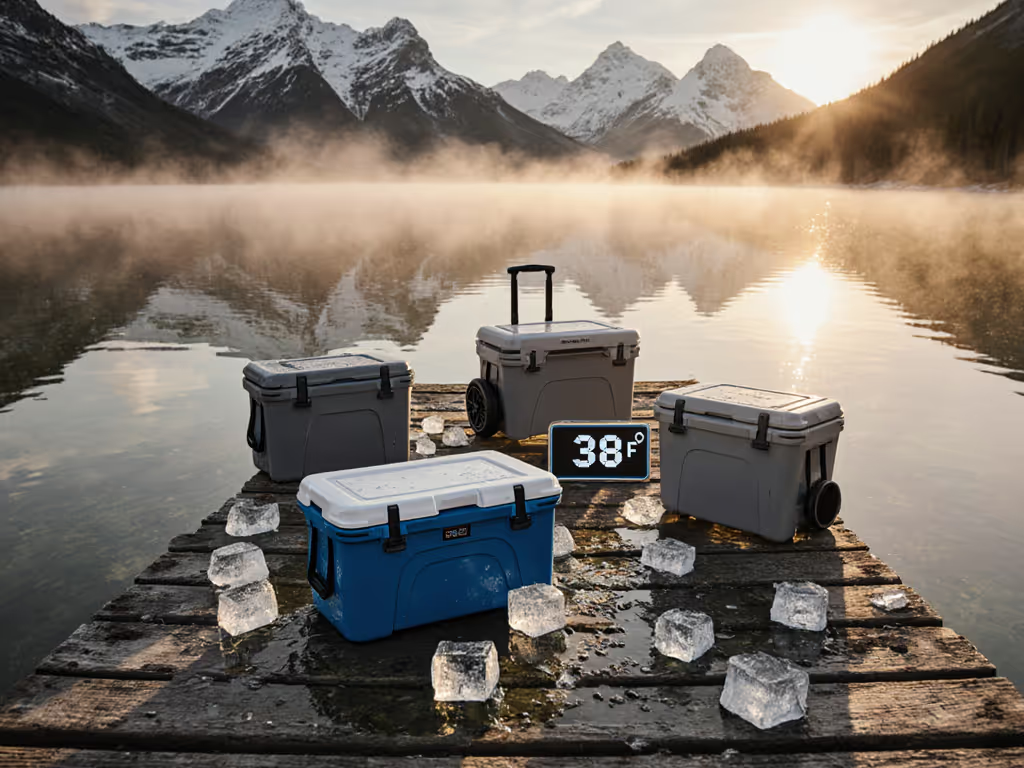
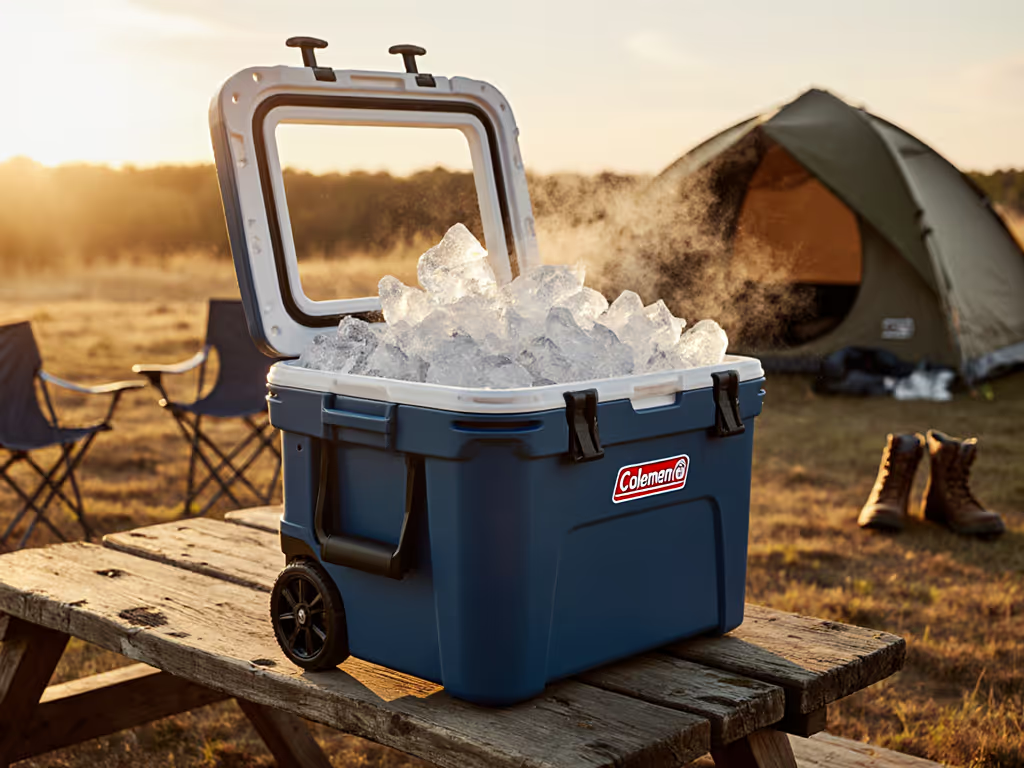

Compostable Coolers Guide: Field-Tested for Single-Day Events
Get field-tested tactics to choose and set up compostable coolers for single-day events. Match capacity to your crowd, zone-pack for faster service, optimize ice, and follow a simple breakdown protocol to keep drinks cold while cutting waste.
